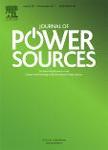版权所有:内蒙古大学图书馆 技术提供:维普资讯• 智图
内蒙古自治区呼和浩特市赛罕区大学西街235号 邮编: 010021

作者机构:Inst High Performance Comp Singapore 138632 Singapore
出 版 物:《JOURNAL OF POWER SOURCES》 (电源杂志)
年 卷 期:2009年第186卷第1期
页 面:10-21页
核心收录:
学科分类:0820[工学-石油与天然气工程] 08[工学] 0807[工学-动力工程及工程热物理] 0805[工学-材料科学与工程(可授工学、理学学位)] 0703[理学-化学]
主 题:Geometry optimization Proton exchange membrane fuel cell Sequential quadratic programming method
摘 要:Integration between COMSOL Multiphysics (TM) and MATLAB (TM) offers a useful option for the self-automated geometry optimization in proton-exchange membrane fuel cells (PEMFCS). It overcomes the difficulties of automatically re-generating high-quality computational meshes and subsequently running the simulations to evaluate the objective function values using commercial software in computational fuel cell dynamics-based designs. Geometry optimization studies of an air-breathing PEMFC searching for the optimum channel ratio at the anode and the optimum open ratio at the cathode, are undertaken. A sequential quadratic programming method is selected to deal with the constrained design problems, while the objective functions are evaluated by running the three-dimensional simulation script of COMSOL (TM) under the MATLAB (TM) environment. Simulation results show that for the air-breathing PEM fuel cell operated at 353 K and one standard atmosphere pressure, when the anode channel ratio is fixed at 10%. the optimum cathode open ratios are very similar for the cell operated at voltages of 0.7 and 0.4V, namely, 49.8% for 0.7 V and 49.5% for 0.4 V. When the cathode open ratio is set at 80% with a cell voltage of 0.7 V, the optimum anode channel ratio is found to be 34.7%. (c) 2008 Elsevier B.V. All rights reserved.